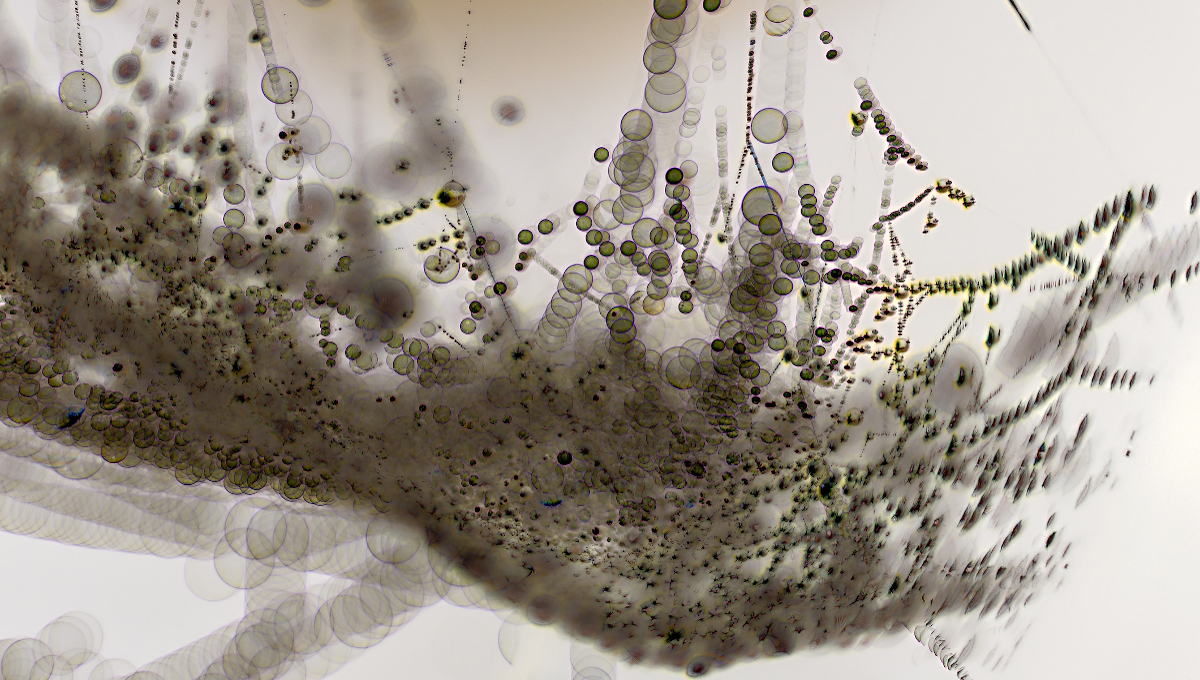Biofilm, which is a cluster of pathogens encased in a protective matrix, is a common enemy across diverse food manufacturing industries.
From dairy, produce, meat, poultry, ready-to-eat deli foods and other products, biofilm is a concern at the farm level and at processing and manufacturing plants.
The protective layers generated by pathogens that create the biofilm, known as extracellular polymeric substances (EPS), resist sanitation efforts and are adept at spreading in moist environments, through a process known as “seeding dispersal.” According to Sterilex Industries, which offers products to treat biofilms and the pathogens they harbor, seeding dispersal is similar to a dandelion releasing seeds to encourage species growth.
Although forming biofilm is a natural process that pathogens — including those commonly leading to foodborne illness outbreaks, such as Shiga-toxin producing E. coli, Listeria monocytogenes and Salmonella — use to survive, industry food safety plans and government regulations don’t necessarily focus on biofilm and how to eradicate it.
Basically, Hazard Analysis and Critical Control Point (HACCP) programs, good manufacturing practices (GMPs) and other components of food safety plans target the conditions that allow biofilms to thrive. A spokesman for the Food Safety Inspection Service (FSIS), the U.S. Department of Agriculture branch tasked with inspections of meat, poultry, dairy and egg farms and facilities, said HACCP standards and procedures are not designed to specifically eradicate biofilms, but establish a system that exposes and treats them by hunting the pathogens they harbor.
Listeria monocytogenes (Lm) is of particular concern among poultry and ready-to-eat meat product companies, according to an FSIS compliance guideline on controlling it.
“Lm is known to form biofilms on food contact surfaces (FCSs) and non-food contact environmental surfaces and, as a result, persists on these surfaces despite aggressive cleaning and sanitizing,” according to the compliance guideline. “Once Lm has established a niche, it may persist in the environment for long periods of time until the niche is identified and eliminated.”
Bob Forner, director of marketing at Sterilex, said food safety plans detail steps to remove foodborne pathogens in the food supply chain. Regulations such as the Food and Drug Administration’s Food Safety Modernization Act focus on pathogens and eradicating them.
“It is required to control foodborne pathogens, like E. coli or Salmonella, but not necessarily required to have a biofilm-specific plan,” Forner said. “But biofilms are the natural state of bacteria, and (processing and production) plants really should be addressing biofilm with testing.”
Production facilities, regardless of the foods they process or manufacture, share some common areas that encourage the growth of biofilm: drains, walls and areas that are hard to reach and be scrubbed or cleaned by hand. Other areas include coils on spiral freezers at frozen food plants, and pipes that carry water to animals.
“There can be biofilm that builds up on the processing line if there are harborage niches,” Forner said. “If there’s a scratch on stainless steel (equipment), biofilm can form in the scratched surface.”
The Environmental Protection Agency, which regulates the information that companies place on labels of chemical products, has approved the use of two claims on different products that attack biofilm. One designates that a product effectively kills bacteria in the biofilm structure. The second label is for products that kill the biofilm as well.
“If the shell of the biofilm is still there, biofilm tends to repopulate relatively rapidy, within a few days likely,” Forner said. “If you remove the shell, it’ll be a much longer period.”



